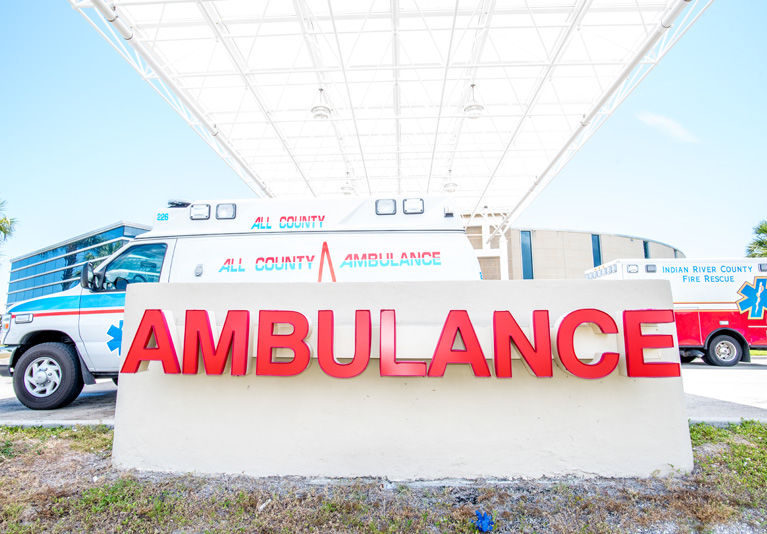
If your child or grandchild gets seriously injured in Vero Beach, don’t expect ambulance drivers to rush them to emergency rooms in Indian River Medical Center or Sebastian River Medical Center.
Our hospitals are not equipped to care for pediatric trauma patients.
Indian River County Fire and Rescue Battalion Chief Cory Richter says if a kid has cut that needs a couple of stitches, a simple broken bone or a minor bump on the head, paramedics likely will whisk them to a local emergency room.
But if the injury is serious – if a child has been in an accident, has a head or neck injury, is bleeding profusely, has ingested prescription medications and is hard to rouse, is not breathing or is turning blue – they will be transported either 15-to-20 miles south to Lawnwood Medical Center in Fort Pierce or 30-to-40 miles north to Holmes Regional Medical Center in Melbourne.
Unlike the ERs at Indian River or Sebastian, Lawnwood and Holmes are classified as “level two” trauma centers, specifically set up to provide 24-hour teams of board-certified emergency pediatric physicians and surgeons as well as resuscitation areas, operating rooms, laboratories, diagnostic testing and specialized equipment that often isn’t available elsewhere, including child-size IVs, breathing apparatus and airway management tools.
The nearest “level one” pediatric trauma centers are St. Mary’s in West Palm Beach, some 80 miles to the south, and Orlando Regional, 100-plus miles to the northwest.
Richter says that is “too far to drive to and therefore we make every attempt to fly the patient” to those destinations by helicopter when a child’s injuries require “level one” treatment.
Richter says the fees for air transport “can range from $12,000 to $25,000 depending on the provider and distance traveled.”
Besides wondering what hospital can treat their child, parents often are unsure whether to call an ambulance or drive a hurt child to the ER or trauma center themselves.
Dr. John Fernandez of the Sebastian River Medical Center’s emergency department offers succinct guidelines: “If a child is awake and walking and not bleeding profusely, put them in the car and go,” he says. “For all other serious injuries, call 911.”
Once an ambulance has been summoned, county paramedics will make the decision whether to take a child to a local ER or trauma center.
Richter uses the example of “a kid who bangs his head and is dizzy … we would evaluate them, do a good assessment, and see if there is anything that makes them a trauma alert. If nothing was found and symptoms are minor, they go local.
“We would look at the whole picture – how the trauma happened – if it was a fall, what they fell on, how far [they fell], did they pass out and for how long? To be honest, sometimes it is just a feeling by the medic that everything is not adding up and the patient should be transported to the trauma center; for the most part this comes from experience.”
Traumatic injuries “are the leading cause of death in children in the United States,” according to the National Institutes of Health, with more than 12,000 fatalities each year.
Questions arose about the transport and treatment of pediatric trauma patients in Indian River County several weeks ago when a 9-year-old ambulance carrying an injured child bound for Lawnwood broke down on Interstate 95 at rush hour during a heavy downpour.
Apparently, no harm came to the child, who was attended by highly-trained paramedics while waiting on the shoulder of the freeway for a substitute ambulance.
So the good news is, if an ambulance is called, paramedics will attend to an injured child and take them where they need to go, and there are trauma centers specially equipped for children in neighboring counties.
The bad news is there is no pediatric trauma center in Indian River County and it takes a bit of drive, even with sirens blaring, to get to facilities that give badly injured children their best shot at successful treatment and survival.



